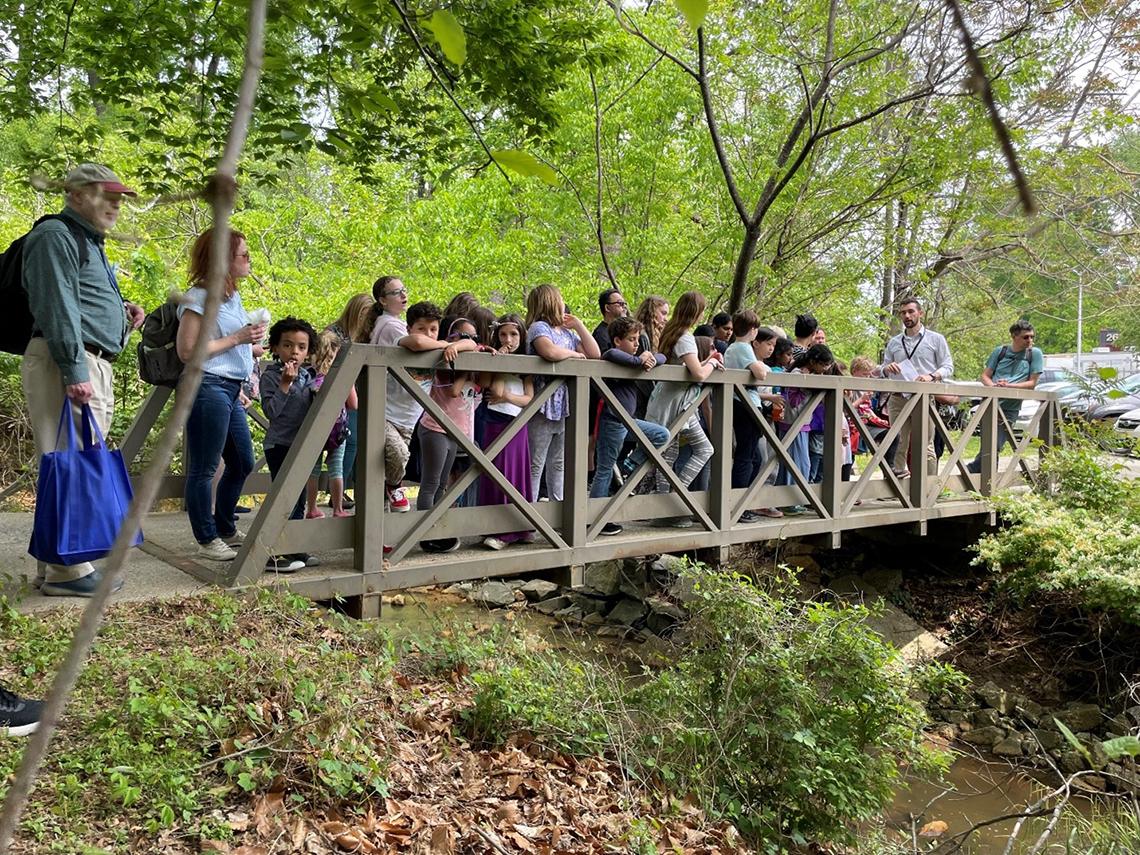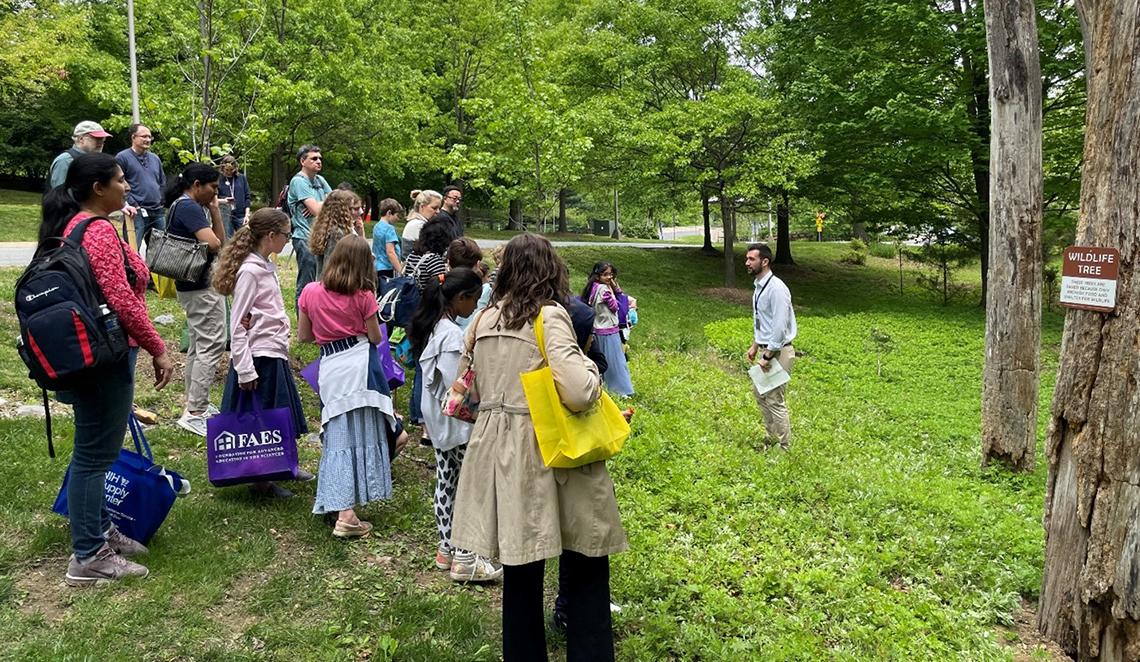NIH’s New Landscape Architect Committed to Sustainability

NIH’s landscape architects have always committed themselves to creating a sustainable campus brimming with plants and wildlife. Connor Price, the newest cultivator of NIH grounds, is carrying on the tradition. He joined NIH earlier this year.
As landscape architect, Price directs basic upkeep by NIH’s grounds maintenance contractor, works with the Division of Environmental Protection in the Office of Research Facilities to prevent erosion and address water runoff issues and digitally catalogs the more than 8,000 trees on campus.
He also sits on an architectural design review board with other ORF employees to ensure new landscapes are consistent with the campus’s look and seamlessly integrate into the surrounding context. During the combined Take Your Child to Work and Earth Day in April, he led a tour of the NIH stream corridor to highlight the importance of protecting local waterways, as well as the restoration work that was done along the stream banks.
His predecessor at NIH, Brandon Hartz, began reintroducing several types of native plants around campus. He hoped the native plants would establish themselves and provide competition to invasive plants and attract birds and other animals.
Price wants to continue what Hartz started. Prior to joining NIH, he spent seven years working at landscape architecture firms with a focus on climate-resilient landscapes. Price advocated for the use of native plants on projects, which are crucial to restoring local ecosystems, increasing biodiversity and providing ideal habitat for wildlife. Once established, native plants are low maintenance and require minimal irrigation.
Price regularly walks around campus to “keep an eye out for broken branches and hazardous trees.” Every time a tree comes down, another must be planted in its place. He helps decide the species and where the tree will be located—whether it’s in the forested areas around the campus perimeter or closer to buildings.

Enhancing NIH’s tree coverage is important. Trees can help mitigate the effects of climate change by sequestering carbon from the atmosphere and preventing erosion, he said. In addition, they can also reduce the effects of urban heat islands, in which buildings, paved roads and parking lots absorb heat during the day and radiate it at night.
“More trees will reduce the temperature and energy use on campus,” he explained.
Price has gotten the birdhouse program back up and running after a pause due to the Covid-19 pandemic. In 2001, NIH grounds maintenance crews installed more than 30 birdhouses and several bat houses in strategic locations throughout the property.

Former landscape architect Lynn Mueller dreamed of the idea as an environmentally friendly way to reduce the insect pest population. The houses are necessary because certain birds build their nests in dead trees and other small cavity spaces. And due to increased urban development, native migratory birds have fewer places to call home.
“They are doing the work for us and then we don’t have to apply pesticides,” said Price. “It’s a natural way of pest management.”
A group of volunteers monitors the birdhouses every week or two. They collect data on the presence of nesting birds, the species of these birds, the quantity of unhatched eggs, the presence of insect pests and the need for box repairs.
During the pandemic, many volunteers were on maximum telework. As a result, the birdhouses fell into disrepair. It’s been two years since the monitors have had data on what species are living in the houses.
He’s been in the role for several months, and, so far, he’s been impressed by NIH’s sense of community and togetherness.
“There are so many institutes and centers at NIH that are working together towards one goal, promoting health and wellbeing,” he said.
